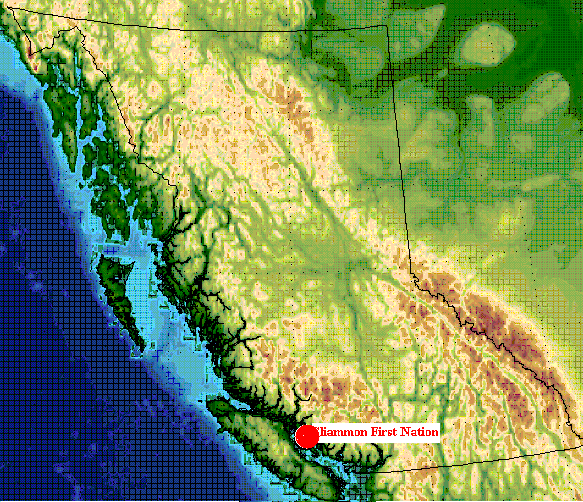
Location Of
Sliammon First Nation in British
Columbia
Time Line
1763 - Royal Proclamation recognizes people as 'nations or
tribes' and acknowledges that they continue to possess traditional
territories until they are 'ceded to or purchased' by the
Dominion.
1774- First recorded contact between aboriginal and
non-aboriginal people in B.C.
1850-1854 - Douglas Treaties: Under instruction from
British Crown, Douglas signs 14 treaties on Vancouver Island.
Process discontinued due to lack of funds from England and various
other factors.
1862 - Smallpox epidemic kills approximately one of every
three aboriginal people in the province.
1870's - First recorded contact with the Oblate
Missionaries. Services were held at both the mouth of Powell Lake
and at Grace Harbour.
1871 - British Colombia enters Confederation and the
federal government given responsibility for Indians.
1873 - the
Federal government forms the Northwest Mounted Police to attend to
conflicts between the Natives and the white settlers.
1876- Federal Indian Act sets up a system of Indian bands
and reserves and establishes wide range of controls over aboriginal
population. Allows only those people registered under the Indian Act
to live on reserves. Provides that reserves can only be reduced in
size with the consent of all adult males in the band and encourages
aboriginal people to voluntarily give up special status as
registered Indians.
1879 - The six reserves of Sliammon are issued by the
provincial government.
(Sliammon Treaty Society web,
Ministry of Aboriginal Affairs web)
![]()